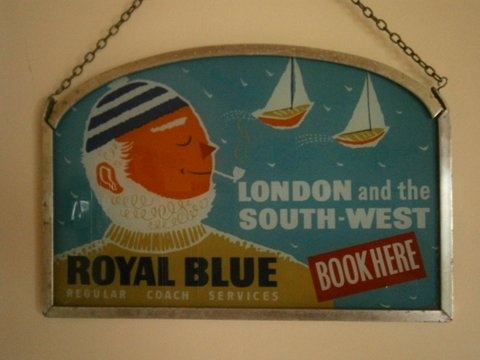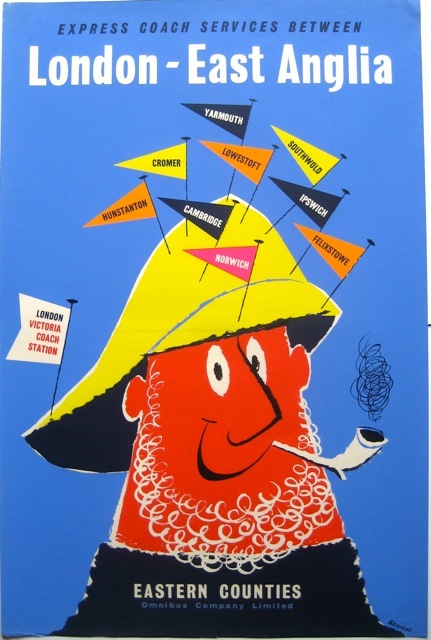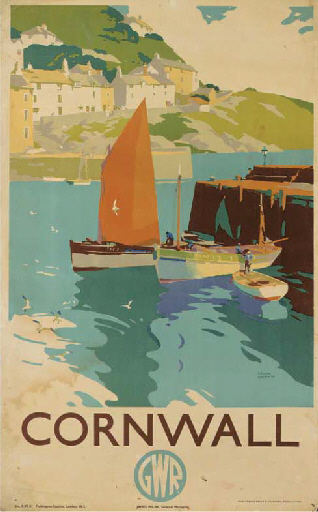I had a theory when I started on this post, but after some research I have now authoritatively blown it out of the water (the pun in that will become apparent later on). However it’s still an interesting journey to travel, so this post will mostly be me showing my workings in order to prove myself wrong. Never mind.
The starting point is this rather wonderful object that arrived in my inbox over the weekend.
Oh that the object itself had turned up.
It’s a version of Daphne Padden’s Royal Blue fisherman, painted onto glass for some coach office somewhere. Having been kept by an employee of Royal Blue, it’s been bought by a transport collector. I am very envious.
But it got me back to thinking about Daphne Padden and fishermen. As I’ve posted relatively recently, she liked them quite a lot, and kept going back to them as a motif.
I’ve tended to think of them as being Cornish fishermen, but as it turns out, they’re not. Here’s another one of hers, for example, advertising the delights of East Anglia.
I don’t own this poster and have had to borrow it from The Lark’s Flickr stream, so thanks to them.
But these fishermen weren’t just a quirk of Daphne Padden’s. At about the same period, Harry Stevens was also mining a very similar vein of imagery.
Both to advertise Cornwall (the artwork above) and East Anglia as well.
Mr Crownfolio has always reckoned that this poster is Harry Stevens’ affectionate pastiche of Daphne Padden’s Royal Blue poster. But I’m intrigued that they’re both starting to use the same imagery at about the same time.
Because either side of the war, the attraction of fishing ports was always the red-sailed boats themselves. Here’s Ronald Lampitt in 1936 and Frank Sherwin, possibly from 1946.
The red sails are, it will not surprise you to learn, also used to advertise East Anglian destinations, in this case by Frank Mason.
Now this is where I was all prepared to work out a neat little theory about the evolution of nostalgia. There must have come a time when the red sails had so completely disappeared that they could no longer be used as a sign for the fishing port, not even in a past tense kind of way. But the fishermen were still there on the quay, so they came to be the new signifier for this kind of place.
Except there is one great big fly in this ointment, which is that one particular fisherman had been extolling the joys of the seaside a long time before any of these posters were designed. It is of course this one, John Hassell’s jolly fisherman for Skegness.
That version is from 1926, but he goes back as far as 1908, and also persists for a very long time. Here’s Frank Newbould reworking him in 1935.
While here’s another one from 1962.
So my theory is, well, not exactly watertight. Please feel free to prove it wrong in any other ways you choose.










